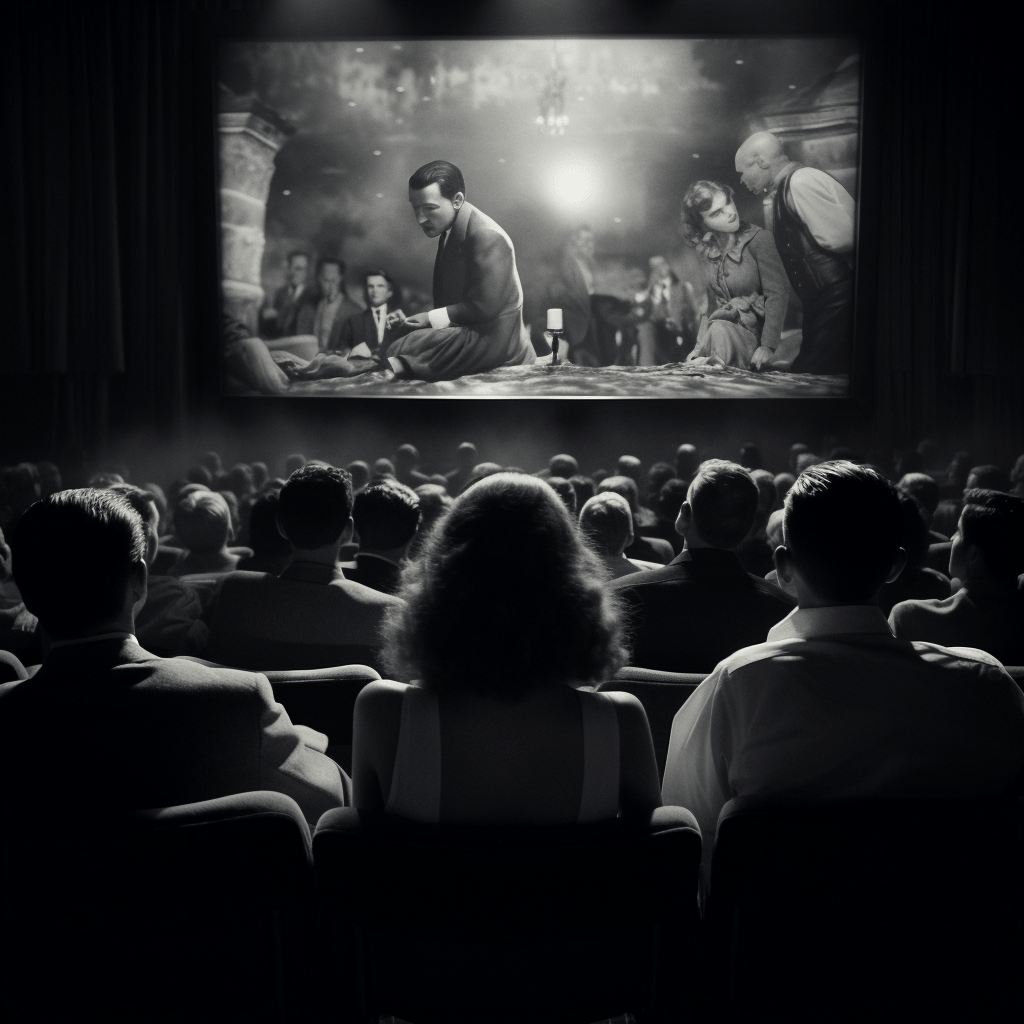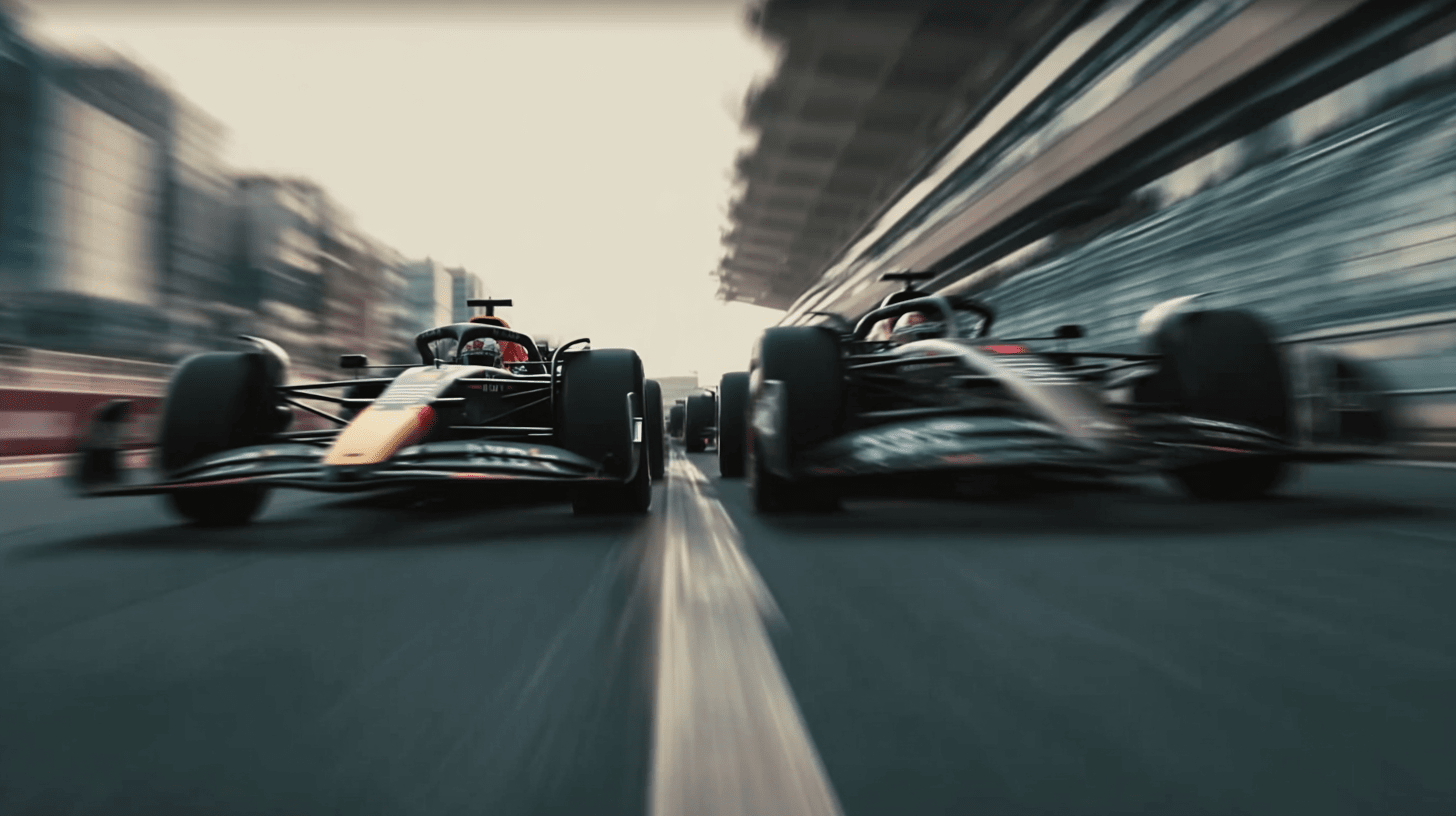What's After the Blog?
Production • Behind the Scenes
The Art of Storyboarding in Film Planning
Uncover the pivotal role and creative impact of storyboarding in film planning, shaping cinematic masterpieces from concept to screen.
August 3, 2024

The Art of Storyboarding in Film Planning
Introduction
Storyboarding, an essential but often underappreciated art in the world of film planning, plays a pivotal role in bringing cinematic visions to life. This meticulous process involves creating a series of drawings or illustrations that map out the sequence of events in a film, essentially forming a visual script. Storyboarding allows directors, cinematographers, and the production team to visualize the scenes before filming begins, ensuring that everyone involved has a clear understanding of the director’s vision. It’s a tool that transcends mere sketching, becoming a crucial communication medium in the complex world of film production.
The significance of storyboarding extends beyond mere planning; it is a creative process that helps to iron out logistical issues, experiment with different visual styles, and even explore alternative narrative paths. For instance, in a complex action sequence, a storyboard can help choreograph every move, angle, and shot, making sure that the final sequence is both coherent and visually engaging. It’s not just about the efficiency of production; storyboarding is about the art of visual storytelling, where every frame is meticulously planned to convey the story in the most effective way possible.
The History of Storyboarding in Cinema
The concept of storyboarding finds its roots in pre-cinematic traditions like theatre and comic art, but its adaptation in cinema has a distinct history. It was first popularized by Walt Disney Studios during the early 1930s, particularly with their groundbreaking work on animated films. The first full-length storyboard was created for Disney’s “Snow White and the Seven Dwarfs” (1937), where it was used to pre-visualize the entire film. This marked a significant shift in how films were planned, offering a new tool for directors to experiment with narrative and visual elements before actual production.
From Disney, the art of storyboarding quickly spread to other studios and genres. One of the early adopters in live-action cinema was Alfred Hitchcock, renowned for his meticulous film planning. Hitchcock used storyboards extensively to plan out his complex suspense sequences, as seen in classics like “Psycho” (1960) and “Vertigo” (1958). The shower scene in “Psycho”, one of the most iconic sequences in cinema history, was heavily storyboarded, which helped Hitchcock create a masterful blend of suspense, pacing, and shock value.
In the modern era, storyboarding continues to be an indispensable tool in film planning. Directors like Steven Spielberg and Christopher Nolan have used storyboarding to create some of the most memorable scenes in films like “Jaws” (1975) and “Inception” (2010). These storyboards are not just a planning device but a form of art in themselves, often revealing the creative genius behind some of cinema’s greatest moments.
Storyboarding’s evolution mirrors the advancement of cinema, adapting to new technologies and storytelling techniques. From hand-drawn sketches to digital illustrations, the art of storyboarding has continually evolved, enabling filmmakers to push the boundaries of creativity and visual storytelling.
Discover more fascinating aspects of film planning and other movie insights on ATM.
What is Storyboarding and Why is it Important?
Storyboarding, at its core, is the visual representation of a film’s narrative, scene by scene. It’s a series of sketches or illustrations, often accompanied by brief descriptions or dialogue, that lay out the sequence of events, camera angles, and transitions in a film. This process serves as a vital communication tool, bridging the gap between the director’s vision and the production team’s execution. It’s especially crucial in complex scenes involving action, special effects, or intricate camera movements, as it provides a clear blueprint for what needs to be shot.
But why is storyboarding so important in film planning? First and foremost, it helps in pre-visualizing the film. This pre-visualization allows directors and cinematographers to experiment with different shots and angles without the costs and constraints of actual filming. It’s a sandbox for creativity, where ideas can be tested and refined. For example, in “Mad Max: Fury Road” (2015), director George Miller used detailed storyboards to visualize the film’s elaborate chase sequences, ensuring that each moment was as impactful and coherent as possible.
Storyboarding also plays a crucial role in planning the logistics of film production. It helps in determining the resources needed for each scene, such as locations, props, special effects, and cast members. By having a clear idea of what each scene requires, production teams can work more efficiently, saving time and reducing costs.
Moreover, storyboards are essential for collaboration and communication. They provide a common visual language for the entire production team, including the director, cinematographer, production designer, and special effects team. This shared understanding is critical in ensuring that everyone is working towards the same vision, particularly in large-scale productions where different departments need to work in tandem.
The Process of Creating a Storyboard
The creation of a storyboard is a meticulous process that involves several stages. It begins with the initial discussions between the director and the storyboard artist, where the overall vision and specific requirements of the film are laid out. The storyboard artist then starts sketching the scenes, often working closely with the director to ensure that each panel accurately captures the intended shot, emotion, and narrative flow.
The level of detail in a storyboard can vary depending on the complexity of the scene and the preferences of the director. Some storyboards are simple sketches, while others are highly detailed, almost like comic strips, with intricate drawings and annotations. For instance, the storyboards for “The Grand Budapest Hotel” (2014) by Wes Anderson were incredibly detailed, reflecting the film’s intricate visual style and precise camera movements.
Once the initial sketches are done, they are often reviewed and revised. This iterative process allows for feedback from different departments, ensuring that the storyboard aligns with the practical aspects of production, such as set design, costume, and special effects. The finalized storyboard then becomes a guide for the entire production process, used by various departments to plan their work.
In recent years, the process of storyboarding has also embraced digital technology. Digital storyboarding tools offer more flexibility and efficiency, allowing for easy edits and adjustments. They also enable the integration of pre-visualization techniques, such as 3D modeling and animation, which can provide an even clearer idea of how the final film will look.
In conclusion, the art of storyboarding is a crucial step in the film planning process, blending creativity with practicality. It’s a tool that helps transform a script into a visual plan, ensuring that the final film is a true reflection of the director’s vision.
For more insights into the fascinating world of film production, including storyboarding, visit ATM.
Famous Examples of Storyboards in Popular Films
Exploring famous examples of storyboards in cinema offers a glimpse into the creative process behind some of the most iconic films. One remarkable instance is “Star Wars: A New Hope” (1977), where George Lucas employed extensive storyboarding to bring his visionary sci-fi world to life. The storyboards for the film, particularly for the Death Star battle sequence, were instrumental in visualizing the complex space scenes and special effects, setting a new standard for visual storytelling in cinema.
Another significant example is “The Shawshank Redemption” (1994), directed by Frank Darabont. The storyboards for this film were crucial in mapping out the prison escape scene, one of the most memorable moments in the movie. The detailed drawings helped the production team understand the sequence of events and the required camera movements, contributing to the scene’s dramatic and emotional impact.
Alfred Hitchcock’s “North by Northwest” (1959) is yet another classic that benefited immensely from storyboarding. The famous crop-duster scene, where Cary Grant’s character is attacked by a plane in a desolate field, was meticulously planned using storyboards. This allowed Hitchcock to execute his vision with precision, creating one of the most unforgettable scenes in film history.
These examples highlight the significant role storyboarding plays in the filmmaking process, from conceptualizing complex sequences to ensuring that a director’s vision is accurately translated onto the screen. The storyboards for these films are not just planning tools but works of art in their own right, showcasing the creativity and skill of the storyboard artists and the directors’ visionary storytelling.
How Does Storyboarding Influence the Final Film?
Storyboarding’s influence on the final film is profound, shaping everything from the film’s visual style to its narrative pacing. One key area of impact is the cinematography. A well-crafted storyboard helps cinematographers plan out shot compositions, camera movements, and lighting setups in advance, leading to a more visually cohesive and striking film. For example, in “Inception” (2010), directed by Christopher Nolan, the complex dream sequences were intricately storyboarded, which greatly influenced the film’s innovative cinematography and visual effects.
Another area influenced by storyboarding is the editing process. Storyboards provide a preliminary blueprint for how scenes will be cut together, helping editors understand the director’s intended pacing and narrative flow. This pre-visualization can be particularly useful in action or special effects-heavy films, where timing and rhythm are crucial. The storyboard for “Mad Max: Fury Road” (2015), for instance, was essential in crafting the film’s fast-paced and seamless editing style.
Furthermore, storyboarding can greatly affect a film’s production design and special effects. By visualizing scenes in advance, production designers and special effects teams can better plan their work, ensuring that sets, props, and visual effects align with the director’s vision. This was evident in “Avatar” (2009) by James Cameron, where the detailed storyboards guided the creation of the film’s elaborate alien world and groundbreaking visual effects.
In essence, storyboarding is a tool that touches every aspect of film production, ensuring that each element works in harmony to bring the director’s vision to life. It’s a practice that underlines the importance of planning and visualization in the creative process, proving that great films are made long before the cameras start rolling.
Explore the intricate process of storyboarding and its impact on films in detail on ATM.
Storyboarding in the Digital Age
The digital age has revolutionized the art of storyboarding, introducing new tools and technologies that enhance the creative process. Digital storyboarding software, like Adobe Story or Storyboard That, allows storyboard artists to create more detailed and dynamic storyboards with ease. These tools offer functionalities like 3D modeling, animation, and the ability to quickly edit or rearrange panels, providing a more flexible and efficient way to visualize scenes.
The integration of digital storyboarding in film planning also enables a more collaborative workflow. With cloud-based platforms, storyboard artists, directors, and other members of the production team can easily share and discuss storyboard panels in real-time, regardless of their physical location. This collaborative aspect is crucial in modern filmmaking, where production teams are often spread across different countries or continents.
Moreover, digital storyboarding opens up possibilities for more elaborate pre-visualization techniques. Filmmakers can use 3D storyboarding to create a virtual representation of scenes, complete with moving characters and dynamic camera movements. This level of pre-visualization is particularly useful in films with complex action sequences or extensive visual effects, such as “The Avengers” (2012), where it helps in planning out the logistics and visualizing the end result before actual filming.
The evolution of storyboarding in the digital age is a testament to the constant innovation in film production. By embracing these new technologies, filmmakers can push the boundaries of storytelling, creating films that are not only visually stunning but also meticulously planned and executed.
Storyboarding Tips for Aspiring Filmmakers
For aspiring filmmakers, mastering the art of storyboarding is a vital step in the journey to making great films. The first tip for beginners is to start with the basics. Learn to sketch simple figures and environments; these don’t have to be elaborate but should effectively communicate the scene’s essence. Understanding camera angles, shots, and movements is also crucial, as these elements are fundamental to visual storytelling.
Another important tip is to think like a director. When creating a storyboard, consider how each panel advances the story, conveys the mood, or develops the characters. Each frame should serve a purpose, whether it’s establishing the setting, building tension, or advancing the plot.
It’s also beneficial to study existing storyboards. Analyzing storyboards from famous films can provide valuable insights into how successful filmmakers visualize and plan their scenes. Websites like ATM can be excellent resources for exploring different films and their storyboarding techniques.
Additionally, aspiring filmmakers should practice regularly. Like any other skill, storyboarding improves with practice. Experiment with different styles and techniques, and seek feedback from peers or mentors. This continuous learning process is key to developing your unique style and approach to visual storytelling.
In conclusion, storyboarding is an art form that requires both creativity and technical skill. By honing this craft, aspiring filmmakers can greatly enhance their ability to bring their cinematic visions to life.
For more resources and insights into the world of filmmaking, including storyboarding, check out ATM.
The Cultural Impact of Storyboarding
Storyboarding, though primarily a pre-production tool, has a significant cultural impact, shaping how stories are told and experienced in cinema. This artistic process has influenced not only the aesthetics of film but also the broader visual culture. Storyboards themselves have become valued as art pieces, often exhibited in galleries and retrospectives. They offer a behind-the-scenes look at the filmmaking process, revealing the initial visual ideas and narrative structures that shape the final film.
In the realm of education and film studies, storyboards are studied to understand the evolution of a film from concept to screen. They serve as a visual document of the filmmaker’s creative process, showcasing the development of cinematic ideas and techniques. For instance, the storyboards of Alfred Hitchcock’s films are analyzed for their meticulous composition and storytelling efficiency, providing invaluable lessons for students and enthusiasts of cinema.
Furthermore, the influence of storyboarding extends into other creative fields such as graphic design, animation, and video game development. The techniques and principles of storyboarding in film are applied in these areas to create compelling narratives and visuals. In the world of advertising and marketing, storyboarding is used to plan and visualize commercials and campaigns, highlighting its versatility as a storytelling tool.
Conclusion
The art of storyboarding is an integral part of film planning, offering a visual language that bridges the gap between script and screen. It’s a process that combines artistic skill with cinematic knowledge, allowing filmmakers to visualize and refine their ideas before the cameras roll. From classic cinema to modern blockbusters, storyboarding has played a crucial role in shaping some of the most memorable films in history.
As we’ve explored, the impact of storyboarding extends beyond the film set, influencing various aspects of visual culture and storytelling. It’s a craft that continues to evolve, embracing new technologies and methodologies to meet the demands of contemporary filmmaking.
For anyone interested in the art and craft of filmmaking, understanding and mastering storyboarding is a step towards realizing your cinematic visions. Whether you’re an aspiring filmmaker, a student of cinema, or simply a film enthusiast, delving into the world of storyboarding can offer a deeper appreciation of the filmmaking process.
Discover more about the fascinating aspects of film production and the art of storytelling by exploring the resources available on ATM. And for more engaging content on various facets of cinema, be sure to visit our blog.
Continue reading

What's After the Movie?
Not sure whether to stay after the credits? Find out!
Explore Our Movie Platform
New Movie Releases (2025)
Famous Movie Actors
Top Film Production Studios
Movie Plot Summaries & Endings
Major Movie Awards & Winners
Best Concert Films & Music Documentaries
Movie Collections and Curated Lists
© 2025 What's After the Movie. All rights reserved.







